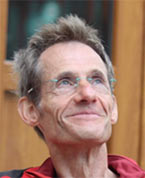SPS Pioneers in IEEE History: Prof. Pierre Comon

Pioneers in Signal Processing
Professor Pierre Comon
Emeritus Research Director, CNRS Grenoble
 Professor Pierre Comon is currently Emeritus Research Director with CNRS. He received the Doctorate degree in 1985 from the University of Grenoble, and the Habilitation to Lead Researches in 1995, from the University of Nice, France.
Professor Pierre Comon is currently Emeritus Research Director with CNRS. He received the Doctorate degree in 1985 from the University of Grenoble, and the Habilitation to Lead Researches in 1995, from the University of Nice, France.
He was with the ISL laboratory, Stanford University, CA, USA, in 1987. He has then been for 13 years in industry, first with Crouzet-Sextant, Valence, France, between 1982 and 1985, and then with Thomson Marconi (Thales group), Sophia Antipolis, France, between 1988 and 1997. He joined in 1997 the Eurecom Institute at Sophia Antipolis. He has been Research Director with CNRS since 1998, first with the Laboratory I3S, Sophia Antipolis, until 2012, and then with Gipsa-Lab, Grenoble, France.
He was the Director of Labex (LABoratory of EXcellence) Persyval, Grenoble, from 2019 to 2022, and the director of the STIC doctoral school of Nice from 2008 to 2010, after being vice-director from 2005 to 2008. He was the main investigator of the 5-year European Research Council (ERC) project "DeCoDa" on Tensor Data Analysis for health and environment between 2013 and 2018. He was also the coordinator of the European Basic Research Working Group ATHOS between 1992 and 1995.
His research interests included high-order statistics (HOS), blind techniques, statistical signal and array processing, tensor decompositions, multi-way factor analysis, and data science. He was an Associate Editor for several scientific journals, including the IEEE Transactions on Signal Processing, the SIAM Journal on Matrix Analysis and Applications, and the Elsevier journal Signal Processing. He received several prizes, including the Silver medal of CNRS in 2018, IMT Grand Prize awarded by the the French Academy of Sciences in 2018, and the Individual Technical Achievement Award from Eurasip in 2006. Dr Comon is a Fellow of IEEE, and Life Fellow of Eurasip and SIAM.
We approached Prof. Comon with a few questions, to learn more!
1. Why did you choose to become faculty/researcher in the field of signal processing?
When I was a student, I liked mathematics and electronics. But I did not know what direction to take. It was encounters that drew me to Signal Processing. First at University, the lectures of Prof. Jean-Louis Lacoume in amphitheatre were very lively; everyone was captivated. I discovered our discipline with him. Then, within the Thalès group, I met Laurent Kopp, a senior scientist with extensive scientific skills and curiosity. It was he who asked me to understand how and why the source separation algorithm developed by Christian Jutten and Jeanny Hérault in 1985 indeed worked. It was the work I did at that time, in 1988, that had the greatest influence on my career. One of my results was to lay the theoretical foundations for "Independent Component Analysis" (ICA). This article has been cited over 12,000 times.
2. Hoe does your work affect society?
My contributions have mainly focused on blind techniques, that is to say algorithms aimed at identifying a system or estimating its inputs from the sole observation of its outputs. This kind of problem is omnipresent in many fields of application, so that these algorithms could find their place, among others, in: air traffic control, satellite communications and electronic warfare, planetary imagery and remote sensing, seismic event forecasting, antenna array processing, audio processing, biomedical (EEG, ECG, MEG, MRI), data mining, chemometrics, social networks... One of the challenges was to ensure that the solution was unique, and hence reliable. This raised unaddressed problems in the field of tensor approximations, which required tools borrowed from algebraic geometry.
Here are just a few examples of applications. (i) The joint decomposition of a collection of Fluorescence Emission Excitation matrices can permit to determine uniquely the spectra and relative concentrations of a compound, which may contain e.g. Polycyclic Aromatic Hydrocarbons; the latter are highly toxic to living beings and the environment if present in drinking water. (ii) Until recently, invasive measures were required to locate epilepsy sources in the brain. Tensor-based localization methods have made it possible to use only surface measurements. (iii) Tensor-based antenna array processing allows radiating sources to be located and estimated even if they are closely located or highly correlated; the requirement is that the product of their coherences in each mode should be small enough.
3. What challenges have you had to face to get to where you are today?
The works I have undertaken led me to take on many challenges. For instance, I had to learn how to manipulate multivariate high-order cumulants, polynomials in several variables, and tensors. This took me out of my comfort zone and taught me a lot. It turned out that many results were counter-intuitive, because we are conditioned by our knowledge of linear algebra. I had the chance to come across difficult but promising problems quite early in my career; it took me decades to solve them.
4. How do you see the growth of IEEE Signal Processing Society being a very early/senior active member of the society?
Signal Processing is a hub, a meeting point between mathematics and applications. It will therefore always play a key role in industrial development. With the rise in computing resources, we have long neglected computational complexity. But the objective has changed in recent years: we should not look for the best performance, but rather for the best ratio of performance to cost (i.e. carbon impact and mining resources). The comparison is striking if we look at deep learning for example. This is a major revolution in the world of science, which was hard to imagine twenty years ago.
5. What advice would you give to scientists/engineers in signal processing?
Do not blindly follow the fashion, for instance AI, and keep your critical mind clear and sharp. You indeed need to fully understand the results you obtain. And above all, keep control over the content of the algorithms you use. Find your own way, avoid the black-box approach and use the traditional Signal Theory approaches as an underlying guide. Take into account tomorrow's living conditions, impacted by climate change and resource depletion. Nowadays frugal algorithms should be preferred in this context: is it really worth tripling computational burden or data size to gain 1% in performance? Of course not.
6. Is there anything else you would like to add?
To be affected by solastalgia is a sign of lucidity. You can influence the evolution of a system more effectively from the inside. So let's not give up on science or politics. The usefulness of research for living beings, in particular our descendants, and the potential harm to the planet, must now be carefully taken into account.

